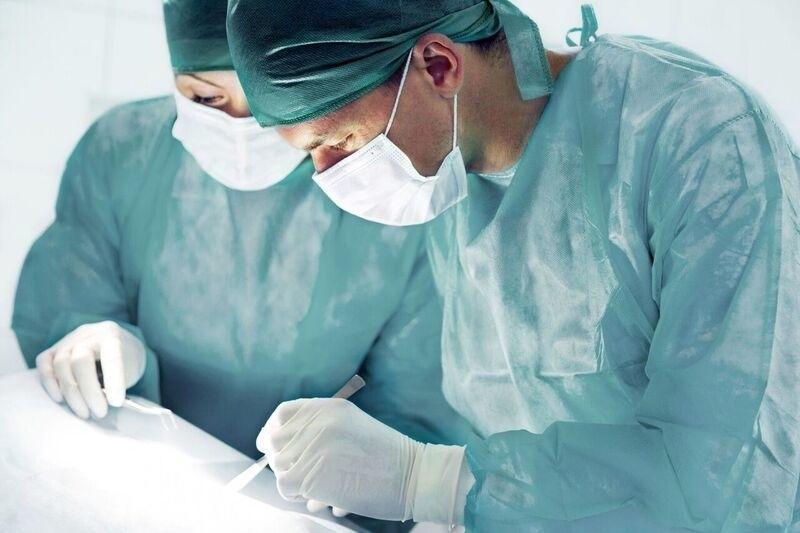What Happens During a Laminectomy?

What is a laminectomy?
You may experience back pain that affects your day-to-day activities. Your doctor may recommend that you undergo a surgical procedure called laminectomy.
Laminectomy is a surgical operation, in which the lamina is removed. This helps relieve pressure that is exerted on the nerve root or spinal cord. It may be due to a herniated disk, spinal injury, or tumors in the spine. Your doctor recommends a laminectomy when all alternative treatments have persistently failed.
Why do I need a laminectomy?
Pain in your lower back may vary, which ranges from mild to severely disabling pain. In most cases that require surgery, the disks in the spine are herniated, which is also a common condition that is corrected by laminectomy.
Because of injury or wear and tear caused by old age, the spinal disk may be broken or displaced. This may result in the compression of the spinal nerves, which causes a sharp pain. It may also result in weakness or numbness. This numbness may affect the legs or arms. You may feel the pain through the buttocks to one or both legs. This shooting pain is known as sciatica.
You will only undergo surgery if all other medical alternatives have failed. The following are some of the alternatives that may be recommended to you:
- Modification of activity
- Medications
- Spinal injections
- Physical therapy
- Weight loss sessions
- Occupational therapy
- Smoking cessation
- Artificial back aid devices
If you experience more serious symptoms, such as numbing of the legs, you will likely require surgery. Discuss the issue thoroughly with your doctor to get a detailed information about the surgery and the reasons to have it. There may be other reasons your doctor may ask you to undergo laminectomy.
Preparation
In the hospital, you will most likely be required to complete the following tests before the surgery:
- Physical examination
- Blood count
- Electrocardiogram (ECG or EKG)
- Urine test
- Blood clotting tests
Drugs with aspirin content or blood thinners should not be used 14 days before the day of surgery. The reason is that these drugs may affect the clotting of blood during and after surgery. On the day of surgery, it is recommended that you give your doctor a list of all prescribed and over-the-counter drugs that you have recently taken.
If you are a smoker, you should quit smoking 14 days before the surgery. On the night before your surgery, do not consume any solid foods after 9:00 p.m. and strictly nothing after midnight.
What are the risks of a laminectomy?
Laminectomy can come with several risks and complications just like any other surgery. The following are a number of complications that can occur due to a laminectomy:
- Severe bleeding during or after surgery
- Wound infection
- Blood clot in the lungs and legs
- Injury to the spinal cord
- Risks related to the use of general anesthesia
In the blood vessels, injury of the nerves can occur. This injury results in weakness of the legs or numbness. Although this is rare, the pain may be very severe and not relieved by surgery.
Depending on your condition and the type of laminectomy you are having, you may experience some other surgical conditions. Please discuss any issues with your doctor in detail before the actual surgery.
What happens during a laminectomy?
You and your doctor should talk about the risks of the surgery, the alternatives, the benefits, and the nature of your laminectomy. The doctor should also brief you of your possible stay in the hospital, what is required of you, and the time of recovery you will need after surgery. Your anesthetist will do several laboratory tests on you prior to the surgery. He or she may record your blood pressure, blood sugar level, and urine samples.
You may be going through injections to help you control secretions in your body. Typically, you will eat nothing at least six hours before surgery. You will be put under general anesthesia, which means you will be unconscious throughout the entire the procedure.
Your posture and position during the operation depends on the type of surgery you are having. After making incision marks on you, the surgeon will first cut through your skin before cutting through your muscles. The surgeon will make a space between your muscles and your vertebrae. The surgeon will then operate your lamina by either removing or adjusting it. Depending on your condition, the surgeon may cut off a part of your herniated disk. The surgeon will then affirm that no more pressure is exerted on your nerves. Once the surgery is complete, the surgeon will then close back your muscles and stitch the skin.
What to Expect After a Laminectomy
After the procedure, the following may occur:
- After the surgery, your temperature, blood pressure, and blood sugar level will be routinely checked.
- Your wound will be frequently monitored for any signs of infection or abnormality.
- You will be given pain relievers.
- The drain tube that was fixed on you during surgery will be removed after two days.
- You will also have urine tests.
- You may be prescribed antibiotics to help you with the recovery process. Please ensure that you follow the prescriptions provided before you leave hospital.
- You will be shown how to properly handle and move your body, which includes your sleeping position and how to change positions. This is particularly useful in your body alignment as it heals. This is very important in the first two days after your surgery.
- Your physical therapist will give you tips on recovery. He or she will show you how to get out of bed in the first days from surgery. You may have to be helped to get out of bed in the first two days. Ensure that you arrange for someone at home to help you during this time.
- Your therapist will help you learn how to walk, sit, and stand when doing exercises without bending or twisting your back. These exercises are vital to your recovery process.
- Depending on your situation, you may be admitted to a rehabilitation center for some days. You may also be asked to attend an outpatient rehabilitation program.
Self-Care After a Laminectomy
You should adhere to your doctor’s instructions. The following are general recommendations your doctor would make:
- Do not stop taking your medication. Ensure that you take the full dose of prescribed antibiotics.
- Avoid strenuous activities after the surgery. Do not wait until you are too tired to stop an exercise. Avoid bending to pick things up as this could strain your spine.
- Do not wear high-heeled shoes during your recovery.
- Your sleeping bed should be firm and comfortable.
- Do not stop the exercises that your physical therapist prescribed for you. If you develop any unnecessary pain, please inform your doctor as soon as possible.
- Do not pull or lift heavy things.
- Do not drive or become involved in sexual activities until your doctor says that you can resume these activities.
- Inform your doctor immediately if you develop fever, headaches, or any other symptoms of a wound infection.
Long-Term Outlook
You need to continue the exercises as prescribed by your physiotherapist in the hospital. This is important in building strength for your spine. It is also important in eliminating the chances of injury in the future.
In very rare cases, the surgery may not be effective and you may still experience pain. Sometimes, surgery is only performed to avoid further deterioration of the spine rather than to relieve the symptoms. Ensure that you discuss your situation and expectations in detail with your doctor before the surgery.













